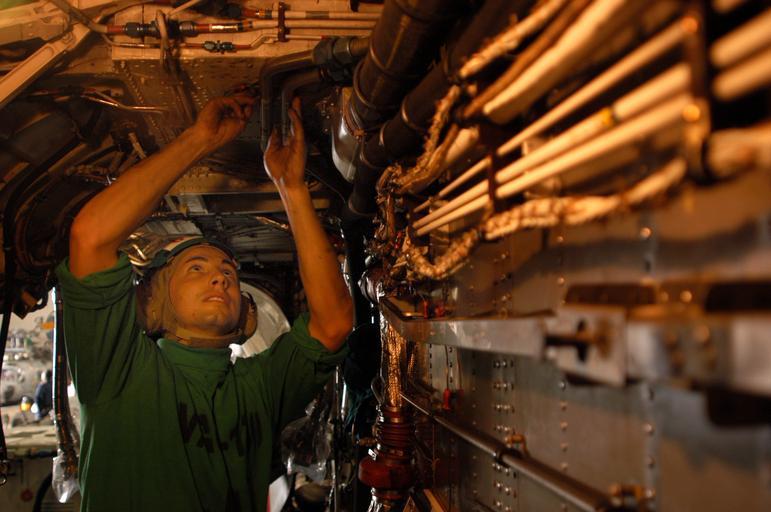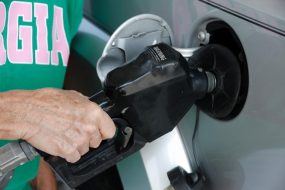
A car’s engine can last for more than 250,000 miles depending on the build quality and how well the engine was maintained. However, that doesn’t mean the engine will last forever, a time will come when the car may need an engine replacement, when that time comes, what else should I replace when replacing an engine?
What to replace when replacing an engine is engine oil, oil filter, oil pump, motor mounts, air filter, spark plugs, ignition coils, fuel injectors, serpentine belt, gasket or seals, water pump, fuel filter, and oxygen sensor, etc., to ensure the smooth running of the engine.
What Else Should I Replace When Replacing an Engine?
What to replace when replacing an engine are:
1. Engine Oil
You must replace the engine oil in the newly installed engine. Do not attempt to use the oil from the old or bad engine in the replaced engine. Irrespective of how new the oil is, you have to dispose of it the right way and add new oil.
Also, while replacing the oil, ensure to use the right oil for the engine. If the manufacturer recommended using 5W-30 oil on the engine, on no account should you use another oil.
Furthermore, know whether to use a high mileage oil/synthetic oil or regular oil especially if the replacement engine is a used one with high mileage.
2. Oil Filter
The oil filter is another important part of the engine that should be replaced while replacing an engine. In fact, you are urged to always replace your oil filter anytime you are making an oil change.
Therefore, while replacing the engine, purchase a new oil filter and replace it with the one in the engine especially when the replacement engine is a used one.
3. Oil Pump
Since the failure of the oil pump can lead to a lack of engine lubrication, it is important to replace the oil pump to be sure that the engine gets the right amount of oil it needs to be lubricated.
I have a neighbor whose engine broke down in the middle of nowhere while he was on a journey. It happened that the oil pump was bad and was not pumping oil to the engine.
It was after the engine was spoilt that he got to find out. So, it’s important to replace the oil pump or at least ensure it is in good condition while installing the engine.
4. Serpentine Belt
If your car comes with a serpentine belt and pulleys, you should have it replaced while replacing an engine. Please ensure you purchase a good belt because proper belt tension is essential for engine operation.
5. Ignition Coils
With the new engine, it is best to replace all the ignition coils with new coils to enable the engine to work well. Replacing the coil will help avoid any form of misfire or lack of power after the replacement.
6. Spark Plugs
While the ignition coils are being replaced, the spark plugs should be replaced as well. The replacement plugs should be new and one that rightly fits your car. If you’re supposed to use an iridium plug, buy an iridium plug, and don’t use any other.
7. Engine Mounts
The engine or motor mounts should be replaced with a new one to ensure that the engine is properly held together while it is in use. Trust me, you don’t want to drive a car with a bad engine mount. The engine will be all over the place and may end up damaging something else on your engine bay.
I’ve had a broken engine mount in the past and before I could have it placed, it has cracked my radiator causing it to leak coolant. At the end of the day, I had to replace both the engine mount and the radiator.
8. Gaskets and Seals
Replace gaskets and seals that connect different engine components to prevent leaks and ensure proper sealing. Oil or coolant leaks can be frustrating, therefore, while replacing the engine, ensure that the seals and gaskets are replaced with a good one to avoid oil or coolant leakages.
9. Air and Cabin Filters
Replace the air filter and cabin air filter, if applicable. A clean air filter ensures the engine gets clean air, while a clean cabin filter improves air quality inside the vehicle. A clogged air filter can cause a random engine misfire and poor acceleration.
10. Clutch or Torque Converter
If you have a manual transmission, it’s a good time to replace the clutch assembly. For automatic transmissions, consider servicing or replacing the torque converter if necessary.
11. Cooling System
Inspect and replace the radiator, thermostat, and water pump if they are old or damaged. The cooling system is crucial for maintaining the engine’s temperature, replacing them will add more value to the newly replaced engine.
12. Fuel Filter
The fuel filter should be replaced during an engine replacement because the reason is because fuel filter plays an important role in filtering the fuel the engine receives to operate. Therefore, replacing the fuel filter is a good idea to ensure the engine receives clean fuel.
13. Oxygen Sensors
It may be wise to use the opportunity of replacing your engine to also replace the oxygen sensors if they are old and give high gas mileage. Since the sensor plays a very important role in the engine, replacing the old one will add more life to the engine and increase your fuel efficiency.
Other parts of the engine that should be replaced and not neglected are:
- Sensors and Solenoids: Inspect and possibly replace sensors such as the crankshaft position sensor, camshaft position sensor, and various solenoids as needed to enable the engine to function well.
- Hoses: Ensure the hoses are in good condition and replace any worn or damaged hoses to avoid air or vacuum leaks.
- Valves: You should also replace the valves such as the PCV valve especially if the replacement engine is a used one.
- Engine Wiring Harness: Ensure the wiring harness is in good condition and compatible with the new engine. If necessary, replace or modify the harness.
- Intercooler (for turbocharged engines): If your vehicle has a turbocharger, inspect and clean the intercooler or replace it if necessary.
- Engine Insulation and Soundproofing: Check and replace any damaged or deteriorated engine insulation and soundproofing materials to reduce noise and heat in the engine compartment.
- Throttle Body and Intake Manifold: Clean the throttle body and intake manifold to ensure proper air intake.
Be that as it may, it is important to assess the condition of these components and replace or service them as needed during the engine replacement process.
The reason why all these parts should be replaced or serviced alongside the engine is to enable the engine to function at its best.
Trust me, you don’t want to start replacing an oil pump after the engine has been installed inside the engine bay. Something you could have done while the engine had not been installed.
The replacement will help minimize the problems after engine replacements. That is why it is important to ensure that all those replacement parts are new and not used.
You can replace the engine with a used engine that is still in good condition, but other replacement parts mentioned in this article should be new and OEM.
Using an aftermarket part that is not quality can affect the engine performance. It might confuse you to think the engine is not good or was not properly installed. So, ensure the replacement parts are all quality parts.
Conclusion
During an engine replacement, it is important to replace the engine mount, worn or damaged hoses, air filter, engine oil and oil filter, spark plugs, ignition coils, fuel injectors, gaskets and seals, oil pump, and a bad serpentine belt and pulleys to ensure the smooth running of the engine after replacement.









